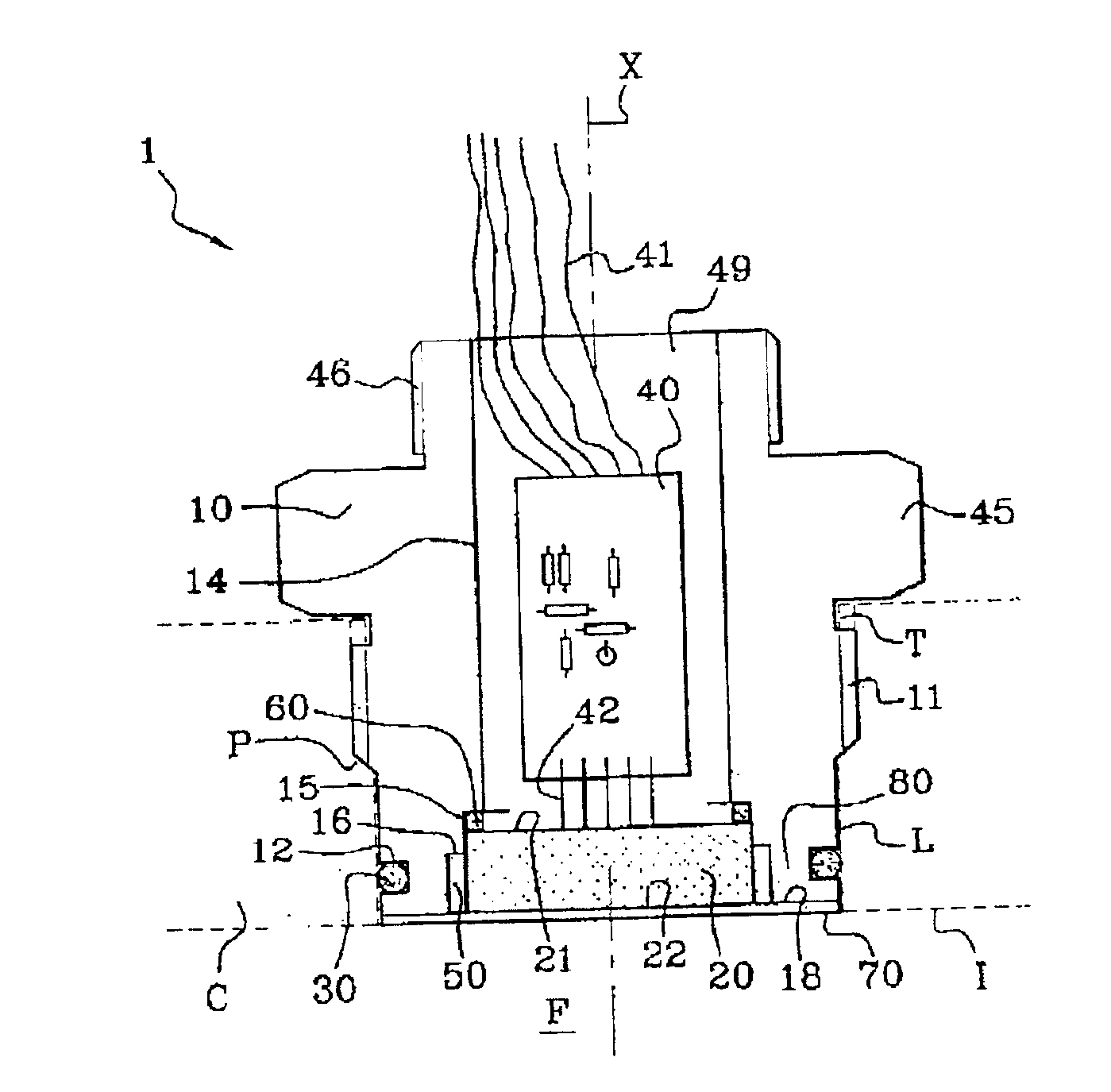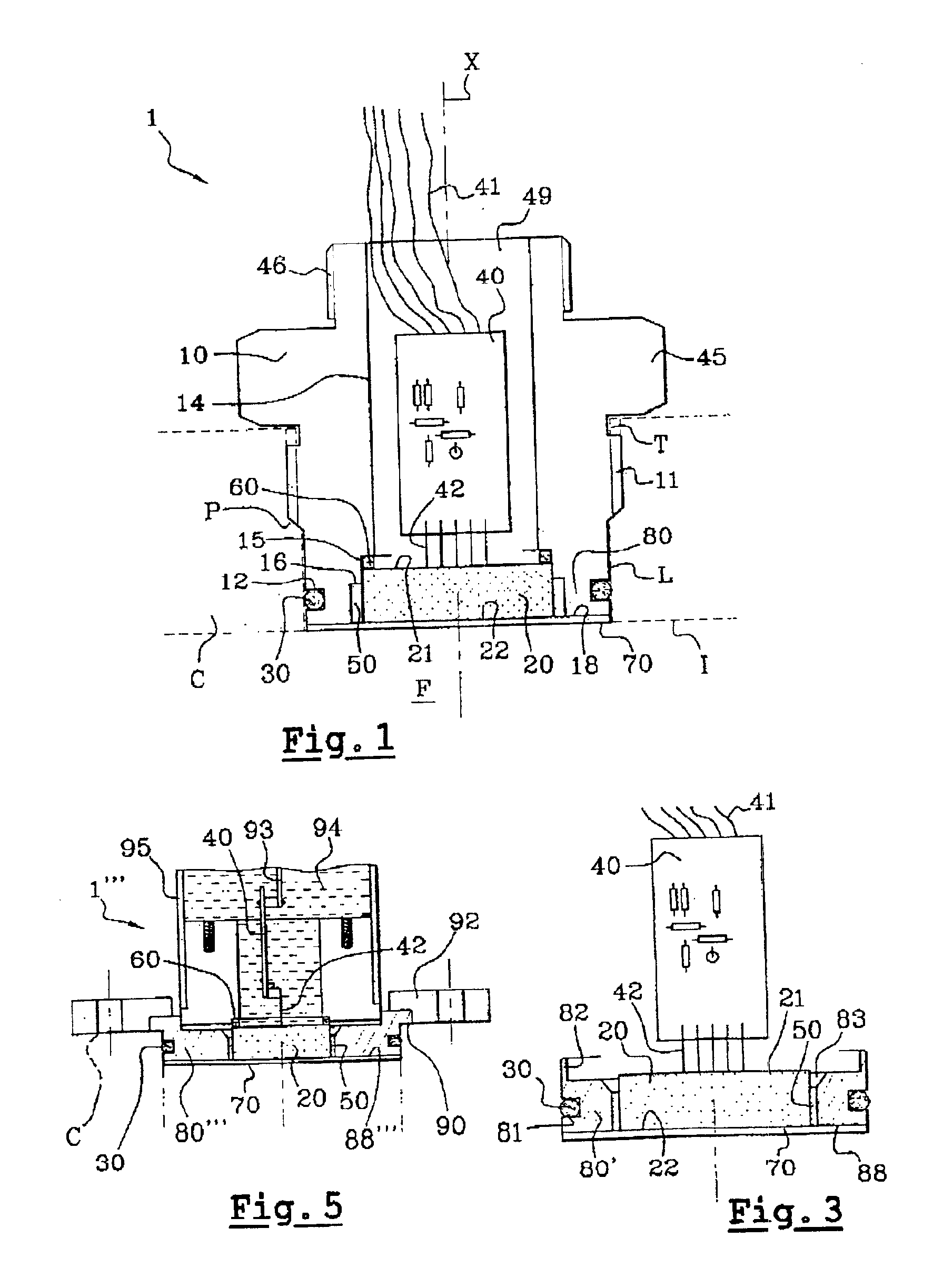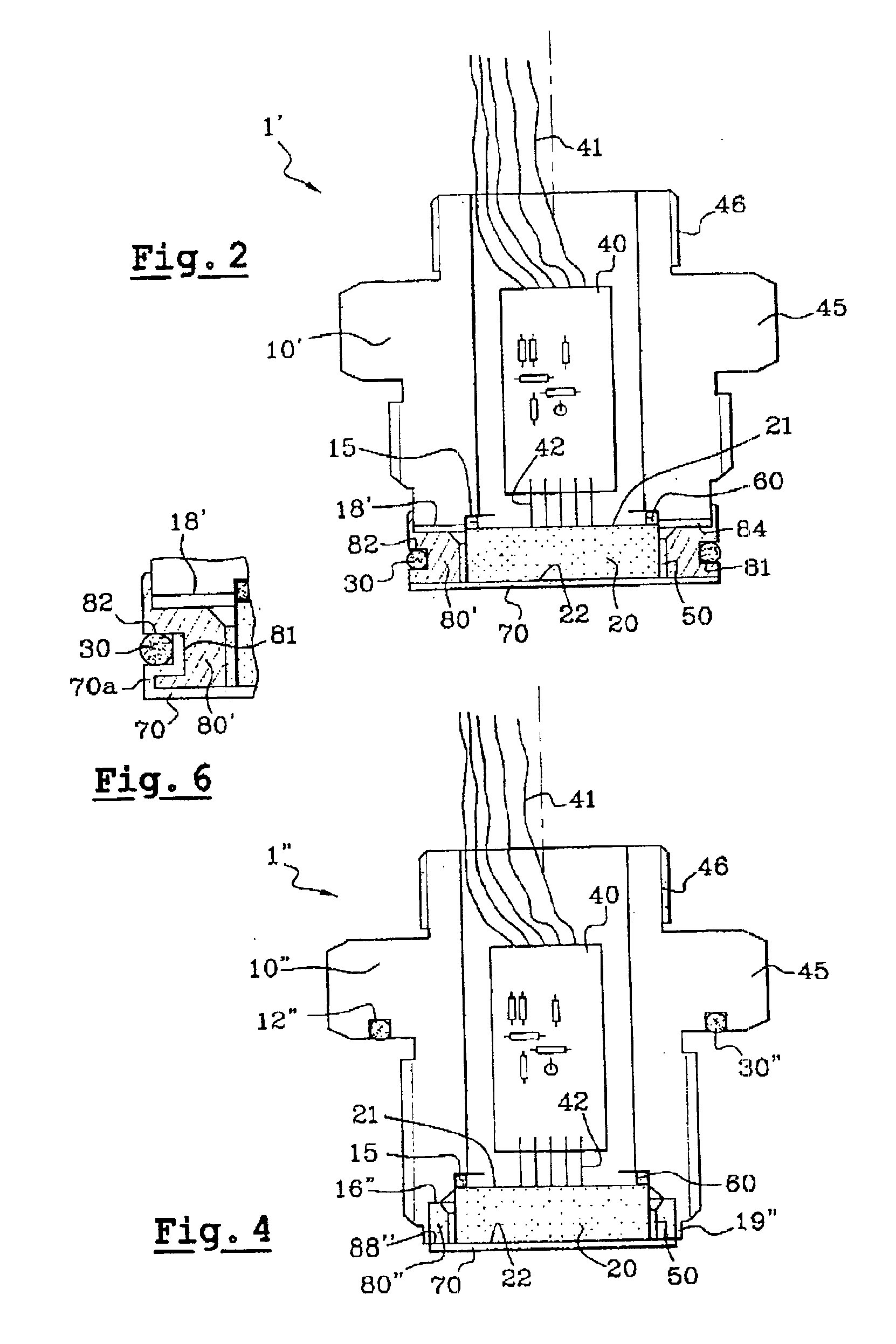Measurement device including a pressure sensor
a pressure sensor and measurement device technology, applied in the direction of capacitors, instruments, electrical equipment, etc., can solve the problems of contaminating the fluid flowing in the pipe, causing a dead space in front of the isolating disk, and unable to clean so as to reduce wear and abrasion, facilitate cleaning the pipe or the vessel, and increase the range of materials that can be used
- Summary
- Abstract
- Description
- Claims
- Application Information
AI Technical Summary
Benefits of technology
Problems solved by technology
Method used
Image
Examples
Embodiment Construction
[0046]Throughout the specification, including in the claims, the term “comprising a” should be understood as being synonymous with “comprising at least one”, unless the contrary is specified.
[0047]FIG. 1 shows a pressure measurement device 1 comprising both a metal coupling 10 made of stainless steel, and a pressure sensor 20. The sensor 20 is known per se and comprises a ceramic diaphragm having an electrical circuit 20a for measuring pressure formed thereon, said circuit comprising resistive tracks 200 as shown in FIG. 7 and a ceramic support with tinned electrical connections passing therethrough connecting the ends of the conductor tracks made on the ceramic diaphragm with the inside face 21 of the sensor 20. The invention is not limited to a sensor of resistive type, and it can be applied to sensors of capacitive type, for example. The sensor 20 further comprises a temperature sensor comprising a temperature-sensitive resistor 20b close to the resistor tracks 200 on the ceramic...
PUM
| Property | Measurement | Unit |
|---|---|---|
| thickness | aaaaa | aaaaa |
| thickness | aaaaa | aaaaa |
| thickness | aaaaa | aaaaa |
Abstract
Description
Claims
Application Information
 Login to View More
Login to View More - R&D
- Intellectual Property
- Life Sciences
- Materials
- Tech Scout
- Unparalleled Data Quality
- Higher Quality Content
- 60% Fewer Hallucinations
Browse by: Latest US Patents, China's latest patents, Technical Efficacy Thesaurus, Application Domain, Technology Topic, Popular Technical Reports.
© 2025 PatSnap. All rights reserved.Legal|Privacy policy|Modern Slavery Act Transparency Statement|Sitemap|About US| Contact US: help@patsnap.com



